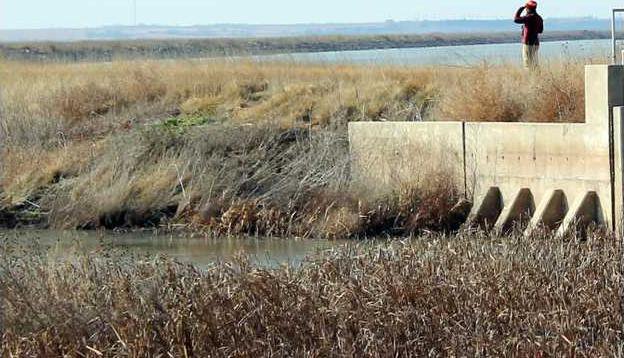Curtis Wolf, director of the Kansas Wetlands Education Center, was pleasantly surprised at the turnout for the rescheduled bird count that was cancelled Dec. 18 due to snow and wet weather. This event is part of the nationwide Audubon Christmas Bird Count, which started Dec. 14 and continues through Jan. 5. Data from the count is used to monitor the health of populations.
Originally, 16 volunteers were confirmed. At the end of last week, only eight had sent word they would take part. Friday, Wolf’s office began receiving more confirmations, and early Monday morning, 20 participants were ready to head out into the 15-mile diameter search area.
“We were the only count in Kansas happening this week,” Wolf said. This happy coincidence may turn out to be an answer to the question: when is the best time to have the count. “In the past, we tried scheduling the count for a Saturday thinking we’d get more participants, but it didn’t work out.”
A professor of ornithology at Kansas State University and a handful of graduate students attended for the first time. The original date occurred during final exams, so when the invitation to the rescheduled count was received, they were excited to have the opportunity to take part, he said.
The area was divided into six search zones, encompassing the Cheyenne Bottoms, most of Ellinwood, most of Great Bend, Hoisington, and all the rural areas in between. City counters stopped at cemeteries and parks and other prime viewing areas, while those searching the rural areas took turns driving the dirt roads and “glassing,” a term used for using binoculars to sight and identify the birds.
“When we saw birds, it was put on the brakes and everyone jump out and count,” said KWEC educator Jean Aycock, one of the staff members participating.
Other participants included individuals from Hays and Larned, representatives from the Nature Conservancy and from Quivira National Wildlife Refuge in Stafford County, which held a count on Dec. 16.
When they regrouped for lunch at noon, reports from each of the six groups indicated more than 80 species had been sighted, including several species of geese, a variety of ducks, pheasants, wild turkeys, and over 40 bald eagles.
“They are scavengers, and are attracted to the ducks at the Bottoms,”Aycock said. “They clean up the sick or the ones that have been injured by hunters.”
In town, nut hatches and cedar waxwings were sighted and predictably Robins were in abundance. Nods of approval greeted reports that mockingbirds and pine siskins had been sighted.
“All in all, not too bad,” said one participant. “It was a pretty good morning.”
After lunch, a handful of participants planned to spend the afternoon counting also. Wolf will compile a final report of their findings which will be available later this week.
FOR THE BIRDS
Better than anticipated turnout for Audubon Christmas Bird Count





